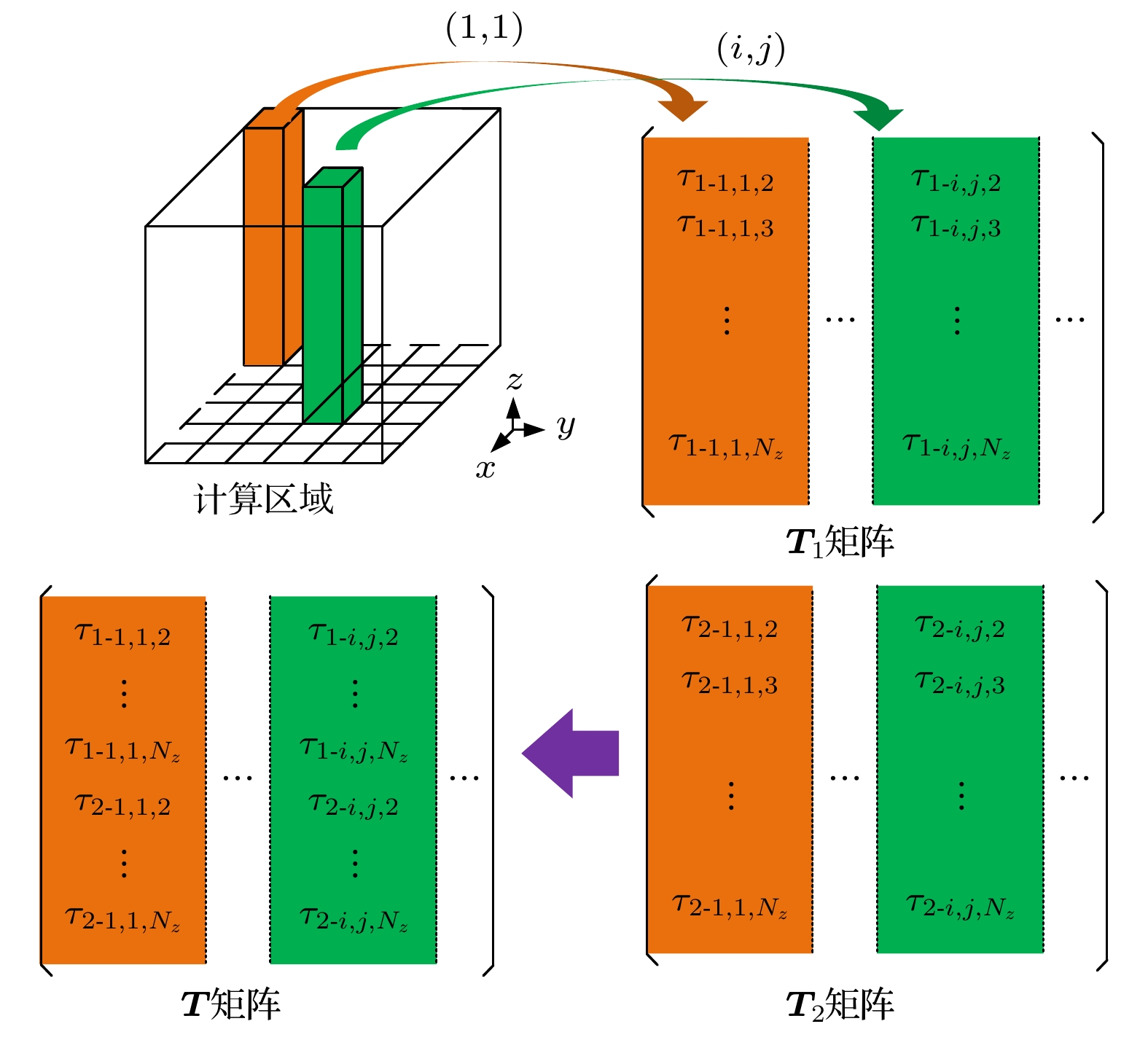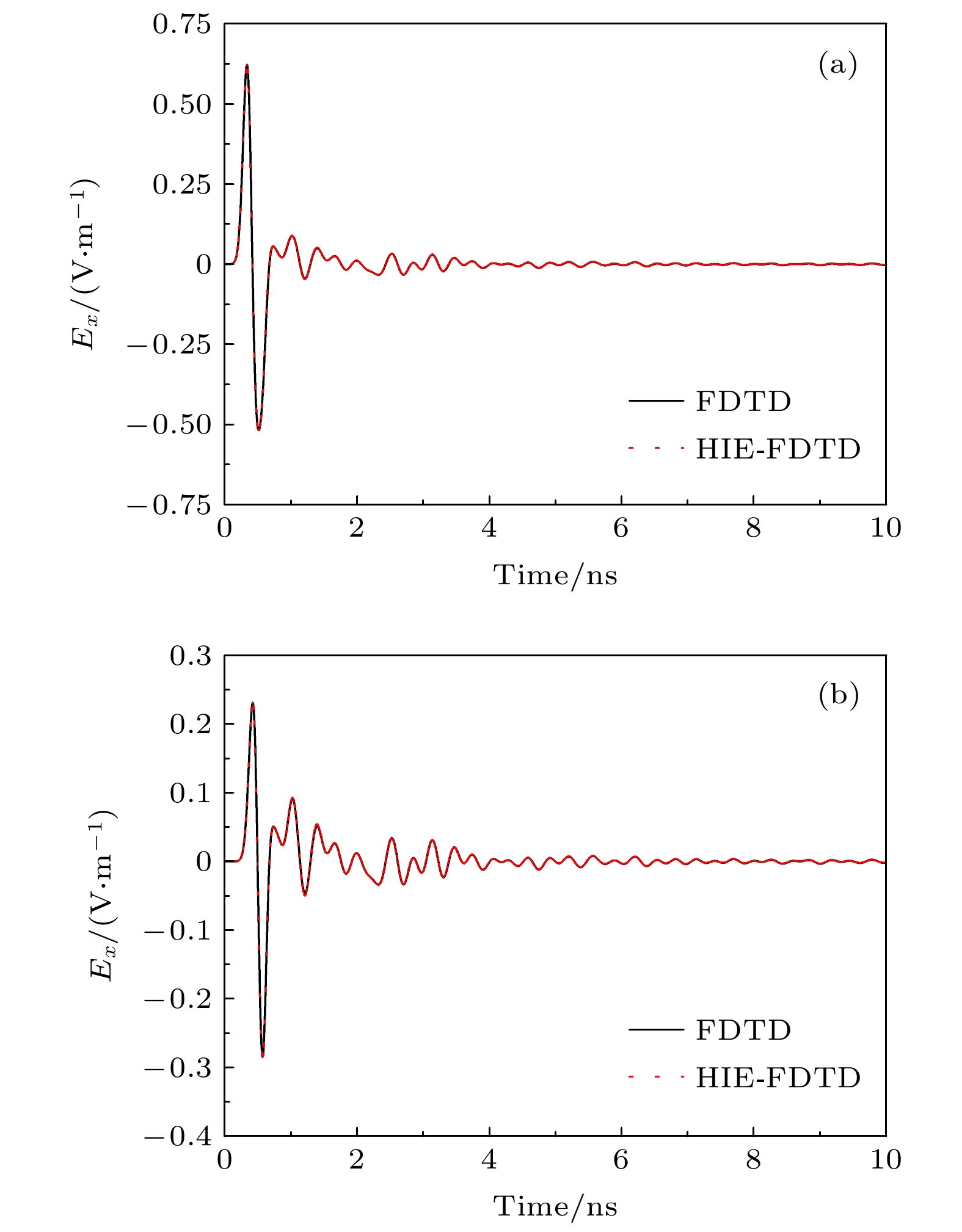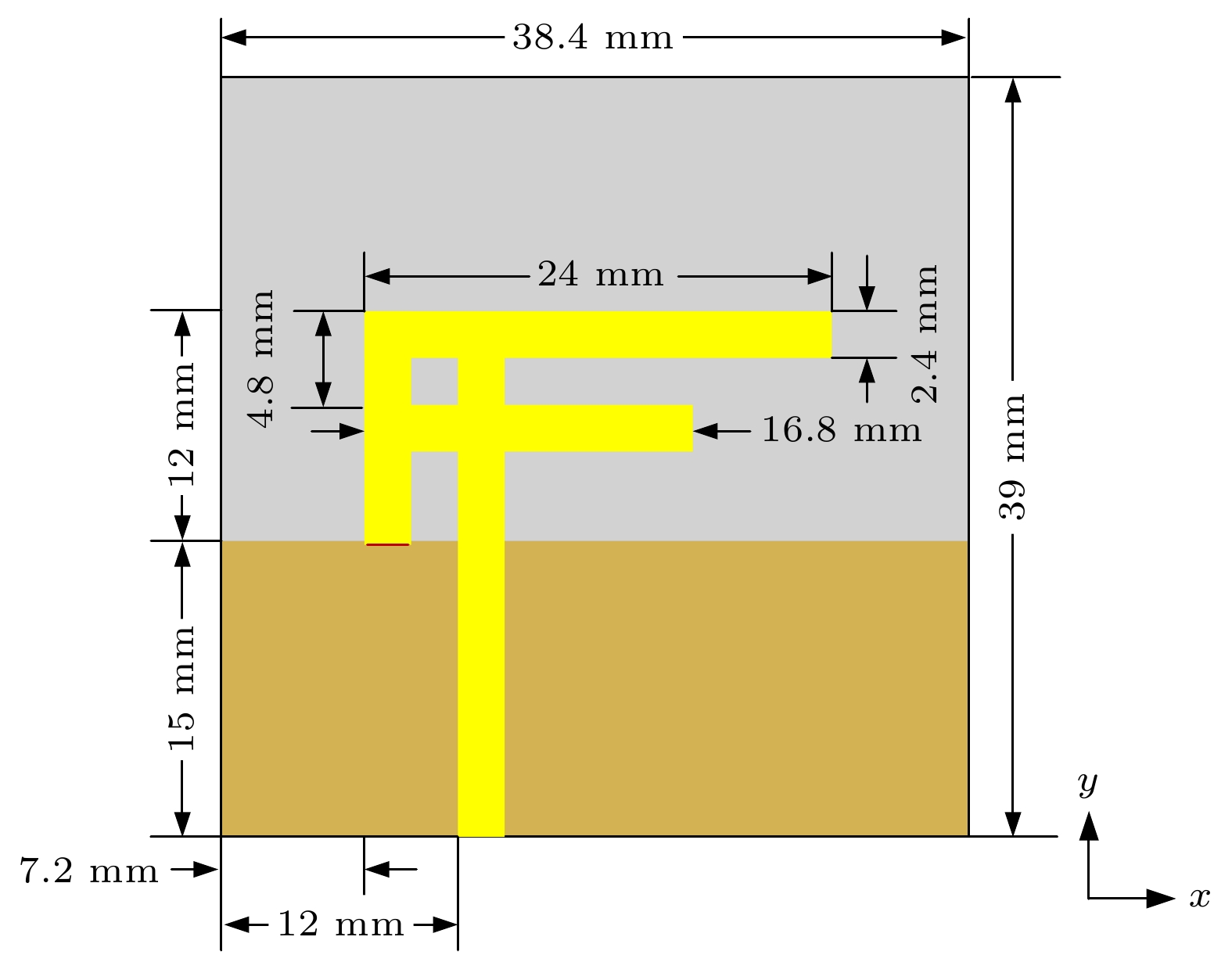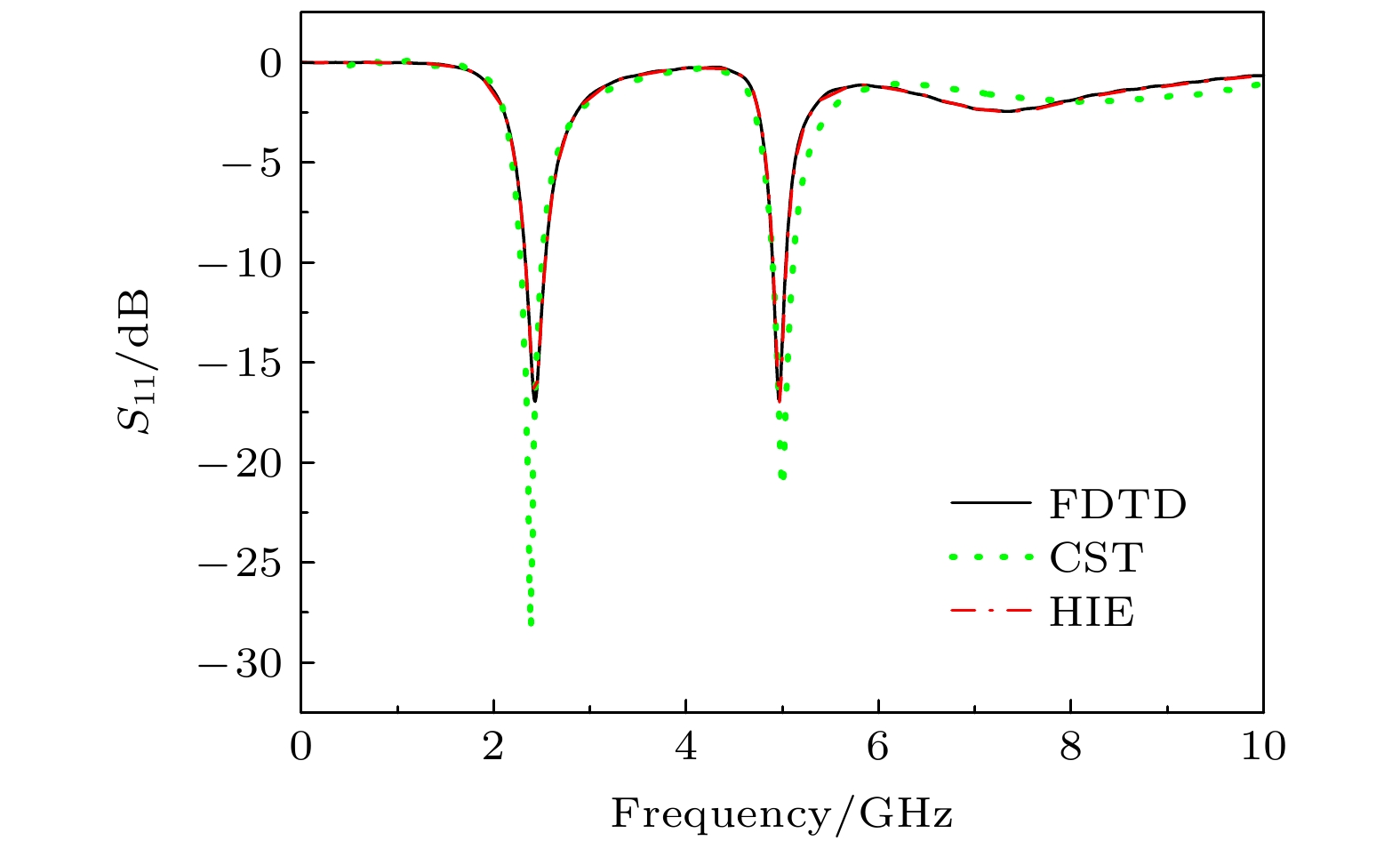-
The hybrid implicit-explicit finite-difference time-domain (HIE-FDTD) method is a weakly conditionally stable finite-difference time-domain (FDTD) method. The time step size of the HIE-FDTD method is only confined by the two coarse spatial cell sizes, so it is widely used in the simulation of electromagnetic targets with fine structures along one direction. In this work, the basic iterative formulations of the HIE-FDTD method are proposed by approximating the formulations of the FDTD method. In these formulations, the iterative coefficients are marked with spatial grid numbers. Therefore, the coefficients can be calculated automatically according to the medium parameters of the spatial cells by indexing the grid numbers. Since the triangular matrix which is used to calculate the electric field is based on the iterative coefficients, the triangular matrix can also be updated automatically. In addition, a method to reduce the number of tridiagonal matrices is proposed in this work, which can effectively reduce the calculation memory and improve the calculation efficiency. In the proposed HIE-FDTD method, equivalent parameters are employed at the interfaces of different media and the convolution perfectly matched layer boundary condition is used to truncate the computational region. Based on the proposed HIE-FDTD method, a series of programs are implemented, which can simulate arbitrary electromagnetic targets with fine structure in one dimension in linear and non-dispersive space. A dielectric plate irradiated by planar wave and a dual-frequency microstrip inverted F antenna are simulated by using these programs. The numerical results are in good agreement with those from the traditional FDTD method and CST software, and the computational efficiency of the proposed HIE-FDTD method is greatly improved in comparison with that of the traditional FDTD method. This study provides a reliable simulation tool for the wide application of the HIE-FDTD method.
-
Keywords:
- electromagnetic target /
- hybrid implicit-explicit finite-difference time-domain /
- equivalent parameter /
- convolution perfectly matched layer
[1] Yee K S 1966 IEEE Trans. Antennas Propag. 14 302
 Google Scholar
Google Scholar
[2] Taflove A, Hagness S C 2005 Computational Electrodynamics: The Finite-Difference Time-Domain Method (3rd Ed.) (Norwood: Artech House) pp107–167
[3] Kim Y H, Choi H, Cho J, Jung K Y 2020 J. Electr. Eng. Technol. 15 1281
 Google Scholar
Google Scholar
[4] Zhang Y X, Feng N X, Wang L X, Guan Z, Liu Q H 2020 IEEE Trans. Antennas Propag. 68 366
 Google Scholar
Google Scholar
[5] Li B H, Du Y P, Chen M L, Li Z 2021 IEEE Trans. Electromagn. Compat. 63 762
 Google Scholar
Google Scholar
[6] Kim Y J, Jung K Y 2021 IEEE Trans. Antennas Propag. 69 6600
 Google Scholar
Google Scholar
[7] 杨利霞, 刘超, 李清亮, 闫玉波 2022 物理学报 71 064101
 Google Scholar
Google Scholar
Yang L X, Liu C, Li Q L, Yan Y B 2022 Acta Phys. Sin. 71 064101
 Google Scholar
Google Scholar
[8] 叶志红, 张杰, 周健健, 苟丹 2020 物理学报 69 060701
 Google Scholar
Google Scholar
Ye Z H, Zhang J, Zhou J J, Gou D 2020 Acta Phys. Sin. 69 060701
 Google Scholar
Google Scholar
[9] 方云 2020 博士学位论文 (西安: 西安理工大学)
Fang Y 2020 Ph. D. Dissertation (Xi’an: Xi’an University of Technology) (in Chinese)
[10] Huang B K, Wang G, Jiang Y S, Wang W B 2003 Microwave Opt. Technol. Lett. 39 97
 Google Scholar
Google Scholar
[11] Chen J, Wang J G 2006 Microwave Opt. Technol. Lett. 48 2291
 Google Scholar
Google Scholar
[12] Chen J, Wang J G 2007 Microwave Opt. Technol. Lett. 49 1001
 Google Scholar
Google Scholar
[13] Chen J, Xu N, Zhang A X, Guo J Y 2016 IEEE Trans. Antennas Propag. 64 3011
 Google Scholar
Google Scholar
[14] Zhai M L, Peng H L, Li D M, Wang D W, Xie H, Yin W Y 2017 Int. J. Numer. Modell. 30 e2250
 Google Scholar
Google Scholar
[15] Xu N, Chen J, Wang J G, Qin X J, Shi J P 2017 IET Microwaves Antennas Propag. 11 92
 Google Scholar
Google Scholar
[16] Chen J, Guo J Y, Tian C M 2018 IEEE Trans. Electromagn. Compat. 60 362
 Google Scholar
Google Scholar
[17] Zhang K L, Wang L, Wang M J, Zheng H X, Li E 2020 Int. J. RF Microwave Comput. Aided Eng. 30 e22151
 Google Scholar
Google Scholar
[18] Chen J, Wang J G 2007 IEEE Trans. Antennas Propag. 55 3603
 Google Scholar
Google Scholar
[19] Cui Y L, Chen B, Xiong R, Mao Y F 2013 J. Electromagn. Waves Appl. 27 529
 Google Scholar
Google Scholar
[20] Unno M, Asai H 2011 IEEE Microwave Wireless Compon. Lett. 21 453
 Google Scholar
Google Scholar
[21] Ge D B, Yan Y B 2005 Finite-Difference Time-Domain Method for Electromagnetic Waves (3rd Ed.) (Xian: Xidian University Press) pp9–27 (in Chinese) [葛德彪, 闫玉波 2005 电磁波时域有限差分方法 (第三版) (西安: 西安电子科技大学出版社) 第9–27页
[22] Atef Z, Elsherbeni, Demir V 2015 The Finite-Difference Time-Domain Method for Electromagnetics with MATLAB Simulations (2nd Ed.) (Scotland: SciTech Publishing) pp43–48
[23] Chen J, Wang J G, Xu N 2016 Weakly Conditionally Stable Finite-Difference Time-Domain Method (Beijing: Science Press) pp63–69 (in Chinese) [陈娟, 王建国, 许宁 2016 弱条件稳定时域有限差分方法 (北京: 科学出版社) 第63—69页]
[24] Chen J, Wang J G 2013 Appl. Comput. Electromagnet. 28 680
[25] Roden J A, Gedney S D 2000 Microwave Opt. Technol. Lett. 27 334
 Google Scholar
Google Scholar
[26] 王秀芝, 高劲松, 徐念喜 2013 物理学报 62 237302
 Google Scholar
Google Scholar
Wang X Z, Gao J S, Xu N X 2013 Acta Phys. Sin. 62 237302
 Google Scholar
Google Scholar
-
表 1 直接法和缩减法对比结果
Table 1. Comparison results of the direct method and the reduction method.
计算方法 直接法 缩减法 1×1 5×5 10×10 1×1 5×5 10×10 三对角矩阵数量 684 11100 41760 12 12 12 程序运行时间/s 0.35 84.78 1299.4 0.02 0.20 0.51 程序所需内存/
MB1.40 24.14 90.80 0.98 15.77 59.27 -
[1] Yee K S 1966 IEEE Trans. Antennas Propag. 14 302
 Google Scholar
Google Scholar
[2] Taflove A, Hagness S C 2005 Computational Electrodynamics: The Finite-Difference Time-Domain Method (3rd Ed.) (Norwood: Artech House) pp107–167
[3] Kim Y H, Choi H, Cho J, Jung K Y 2020 J. Electr. Eng. Technol. 15 1281
 Google Scholar
Google Scholar
[4] Zhang Y X, Feng N X, Wang L X, Guan Z, Liu Q H 2020 IEEE Trans. Antennas Propag. 68 366
 Google Scholar
Google Scholar
[5] Li B H, Du Y P, Chen M L, Li Z 2021 IEEE Trans. Electromagn. Compat. 63 762
 Google Scholar
Google Scholar
[6] Kim Y J, Jung K Y 2021 IEEE Trans. Antennas Propag. 69 6600
 Google Scholar
Google Scholar
[7] 杨利霞, 刘超, 李清亮, 闫玉波 2022 物理学报 71 064101
 Google Scholar
Google Scholar
Yang L X, Liu C, Li Q L, Yan Y B 2022 Acta Phys. Sin. 71 064101
 Google Scholar
Google Scholar
[8] 叶志红, 张杰, 周健健, 苟丹 2020 物理学报 69 060701
 Google Scholar
Google Scholar
Ye Z H, Zhang J, Zhou J J, Gou D 2020 Acta Phys. Sin. 69 060701
 Google Scholar
Google Scholar
[9] 方云 2020 博士学位论文 (西安: 西安理工大学)
Fang Y 2020 Ph. D. Dissertation (Xi’an: Xi’an University of Technology) (in Chinese)
[10] Huang B K, Wang G, Jiang Y S, Wang W B 2003 Microwave Opt. Technol. Lett. 39 97
 Google Scholar
Google Scholar
[11] Chen J, Wang J G 2006 Microwave Opt. Technol. Lett. 48 2291
 Google Scholar
Google Scholar
[12] Chen J, Wang J G 2007 Microwave Opt. Technol. Lett. 49 1001
 Google Scholar
Google Scholar
[13] Chen J, Xu N, Zhang A X, Guo J Y 2016 IEEE Trans. Antennas Propag. 64 3011
 Google Scholar
Google Scholar
[14] Zhai M L, Peng H L, Li D M, Wang D W, Xie H, Yin W Y 2017 Int. J. Numer. Modell. 30 e2250
 Google Scholar
Google Scholar
[15] Xu N, Chen J, Wang J G, Qin X J, Shi J P 2017 IET Microwaves Antennas Propag. 11 92
 Google Scholar
Google Scholar
[16] Chen J, Guo J Y, Tian C M 2018 IEEE Trans. Electromagn. Compat. 60 362
 Google Scholar
Google Scholar
[17] Zhang K L, Wang L, Wang M J, Zheng H X, Li E 2020 Int. J. RF Microwave Comput. Aided Eng. 30 e22151
 Google Scholar
Google Scholar
[18] Chen J, Wang J G 2007 IEEE Trans. Antennas Propag. 55 3603
 Google Scholar
Google Scholar
[19] Cui Y L, Chen B, Xiong R, Mao Y F 2013 J. Electromagn. Waves Appl. 27 529
 Google Scholar
Google Scholar
[20] Unno M, Asai H 2011 IEEE Microwave Wireless Compon. Lett. 21 453
 Google Scholar
Google Scholar
[21] Ge D B, Yan Y B 2005 Finite-Difference Time-Domain Method for Electromagnetic Waves (3rd Ed.) (Xian: Xidian University Press) pp9–27 (in Chinese) [葛德彪, 闫玉波 2005 电磁波时域有限差分方法 (第三版) (西安: 西安电子科技大学出版社) 第9–27页
[22] Atef Z, Elsherbeni, Demir V 2015 The Finite-Difference Time-Domain Method for Electromagnetics with MATLAB Simulations (2nd Ed.) (Scotland: SciTech Publishing) pp43–48
[23] Chen J, Wang J G, Xu N 2016 Weakly Conditionally Stable Finite-Difference Time-Domain Method (Beijing: Science Press) pp63–69 (in Chinese) [陈娟, 王建国, 许宁 2016 弱条件稳定时域有限差分方法 (北京: 科学出版社) 第63—69页]
[24] Chen J, Wang J G 2013 Appl. Comput. Electromagnet. 28 680
[25] Roden J A, Gedney S D 2000 Microwave Opt. Technol. Lett. 27 334
 Google Scholar
Google Scholar
[26] 王秀芝, 高劲松, 徐念喜 2013 物理学报 62 237302
 Google Scholar
Google Scholar
Wang X Z, Gao J S, Xu N X 2013 Acta Phys. Sin. 62 237302
 Google Scholar
Google Scholar
Catalog
Metrics
- Abstract views: 6697
- PDF Downloads: 134
- Cited By: 0














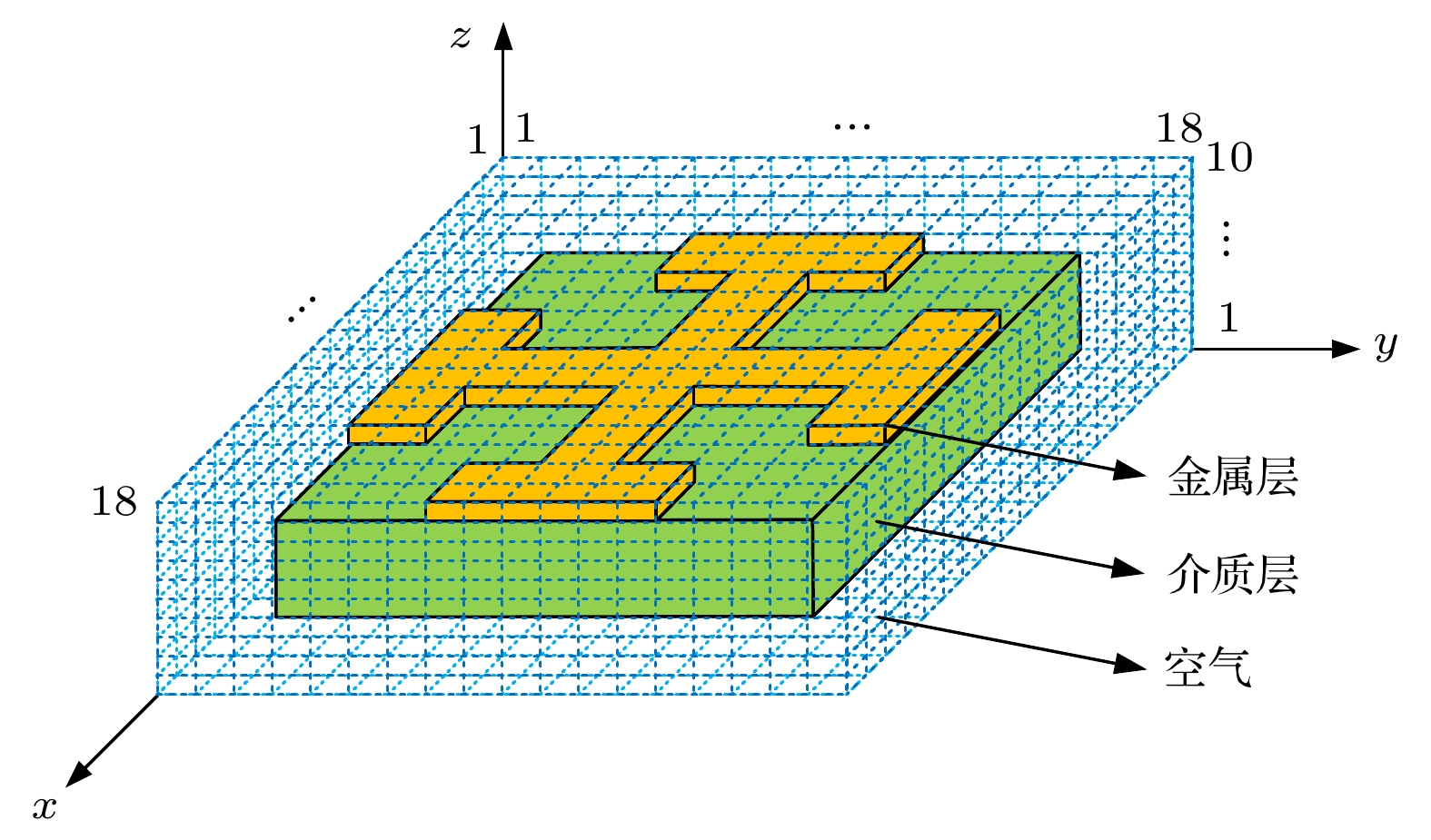
 DownLoad:
DownLoad:

